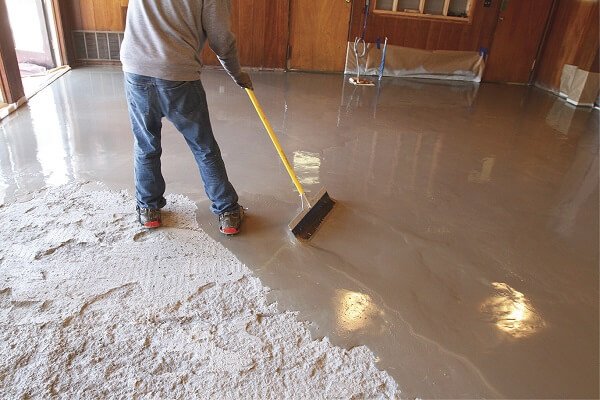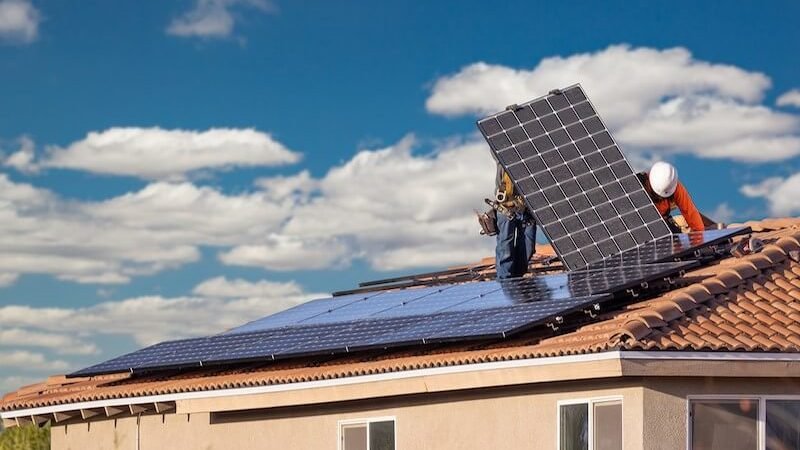When and How to Use Self Leveling Cement

When and how to use self-leveling cement is crucial for success. The correct application time and mix can determine the final result. Several variables affect the leveling properties of self-leveling cement, including time to mix, mixing speed, weather conditions, and amount of water and aggregate or bonding agent added. If you are unsure of the proper method for your situation, follow manufacturer instructions to apply self-leveling cement.
Applied over an existing subfloor
When you’re ready to install a new floor, you may be wondering how it can be Applied over an existing subfloor. There are several factors to consider when applying a new floor over an existing one. If the existing flooring is in good condition, you may just be able to apply a new layer over the top. However, if you notice that parts of the existing flooring are broken or damaged, you may need to remove the subfloor and start over.
If your existing subfloor is sagging, you may want to consider installing a plywood underlayment. Plywood underlayment is about four inches wide and one-half inch thick and can correct minor irregularities in your subfloor. Make sure the joints are offset by half a sheet and center the short edges over the joists. If your subfloor is uneven, it may require minor alterations to the existing flooring.
When installing a new subfloor, you may also need to repair or replace loose nails. The problem may be caused by a heavy spill or a leaking window. However, you should try to salvage the subfloor if it’s intact. To do this, remove any rugs, furniture, or drywall from the area. You may also want to remove any wet drywall from the ceiling or floor joists. Install a dehumidifier to help draw moisture from the area and promote drying.
Sets up smooth and flat within 1-2 hours
Self-leveling concrete is a product that hardens within two hours and sets up smooth. This product is generally composed of Portland cement and polymer plasticizers. Though it has the strength of concrete, it flows much faster and sets up flat and smooth. It also requires less manpower. If you’re pouring a large area, it’s recommended to mix a larger batch.
When deciding on a self-leveling concrete, it’s important to look at the set time and prep time on the package. This will give you an idea of how long the entire process will take. Make sure to follow the instructions to the letter. You will want to fill holes and cracks, and vacuum the floor before pouring the cement. You will need to mix it with a paddle or other tool for the amount of time specified on the bag.
Is not a crack-isolation solution
When used improperly, Self Leveling Cement can cause cracks and bubbles. Before using this type of concrete, follow the manufacturer’s instructions. Mixing time, consistency requirements, and time to cure are all important factors that should be carefully considered. If you do have questions, you should contact a customer service representative. They can provide helpful advice and helpline numbers. This article aims to provide you with some of the most important information about this product.
Using a crack-isolation membrane is an excellent way to protect your concrete from damaging movement. These products work by providing a stretchy layer that isolates the tile from its substrate. This means that if the tile were to crack, it wouldn’t telegraph this movement up through the tile. Crack isolation membranes can be applied to a number of different substrates.
Preparing the substrate
There are a number of things to do before applying self-leveling cement. For starters, you must prepare the substrate. If the surface is new concrete, you must wait at least 28 days before using self-leveling cement. The main concern is drying shrinkage and movement of the concrete, which could cause cracks and other problems with the leveling material. If you cannot wait for this long, you can apply a moisture treatment system before applying the self-leveling cement.
In addition to removing contaminants that might hinder bonding, the substrate must be properly prepared to accept the self-leveling cement. Among the common contaminants to avoid are adhesive residue, sealers and curing compounds, loose paint, and oil and grease. Polished self-leveling cement also requires the preparation of the surface with concrete surface profiles and epoxy primers. Lastly, you must perform mechanical abrasion to remove loose paint and other impurities.
The thickness of self-leveling cement will depend on the thickness of the substrate. Some self-leveling underlayment products can be applied neatly, while others require you to mix the cement with appropriate aggregate. To achieve the specified thickness, you need to use two separate pours or multiple lifts. Once the first pour is walkable, you can apply a primer coat. If the first pour was not walkable, you should repeat the process.
Rapid set
Levelflor is a hydraulic cement-based self leveling underlayment that levels indoors and outdoors in less than 20 minutes. Its quick dry time and workability make it an excellent choice for fast track leveling applications. In as little as four to 16 hours at 70 degrees Fahrenheit, Levelflor can be covered with finished flooring. Read on to learn more about this revolutionary product. We’ve gathered some tips for applying Levelflor.
When laying Rapid Set TRU Natural Self Leveling, your concrete surface must be sound and free of gypsum compounds and surface contaminants. The substrate must be between ICRI CSP 3 and 5. Avoid acid etching if possible. Prepare the surface by applying a primer. You should also apply a slurry of Rapid Set TXP(tm) fast epoxy primer to the surface. Once the primer dries, you’ll need to spread sand to refusal.
Rapid Set Concrete Leveler is a high quality self-leveling underlayment that cures quickly. Unlike traditional floor coverings, this compound is designed for new floors and repair projects. It has excellent flow and working properties, and a 24-hour strength. It can be covered with finished flooring in four to 16 hours, depending on its temperature. It can be used both indoors and outdoors. If you are repairing an existing floor, Rapid Set Concrete Leveler may be the best option for you.
Levelquik ES
The main purpose of Levelquik ES Self-Leveling Cement is to level floors prior to installing floor coverings. Levelquik is best suited for jobs that require extended working hours. After pouring, the material requires 15 minutes to heal and correct imperfections. To get the best results, apply the leveling compound from the feather edge to 1/2′. The application procedure is easy and fast and requires no special skills.
The spread of self-leveling cement varies over time. During its first three hours of application, the product shows a 5 16” gap. The next two are depressions, and on the left side, the layer of the self-leveling cement is covered with a wet cloth. After each measurement, the compound is re-mixed for 15 seconds. This helps the compound reach its optimal level.
The cement composition of the invention comprises one or more adjuvants, such as a setting retardant, a hardening accelerator, a cohesion and stability agent, and a superplasticizer. The setting retardant can be a sodium carbonate or lithium carbonate mixture, and it has a shelf life of between one and three hours. The self-leveling fluid screed is ideal for floors with unevenness or in areas where the temperature is high.
A concrete plant can prepare the cement composition, which is mixed with water and other materials in a mixer. The cement composition also has a shelf life of approximately one hour and thirty minutes. It also exhibits rapid hardening. Its mechanical resistance to compression is greater than 1 MPa after 24 hours, which allows workers to continue their work and allow pedestrian traffic. This product can also be used as a ready-to-use premix or mortar in a concrete plant.






